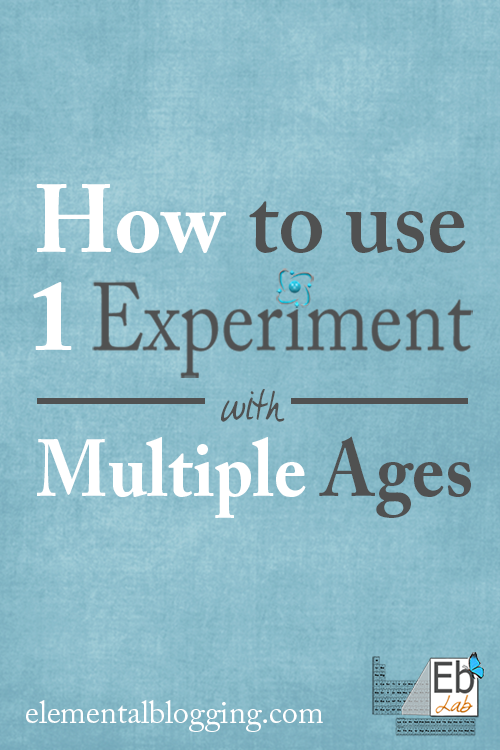 As homeschoolers, it is not uncommon for us to have a wide age range of students. We are comfortable scaling writing assignments, spelling words, history notebooks, and art projects. Even so, the thought of being able to do one experiment with all of our students seems elusive.
As homeschoolers, it is not uncommon for us to have a wide age range of students. We are comfortable scaling writing assignments, spelling words, history notebooks, and art projects. Even so, the thought of being able to do one experiment with all of our students seems elusive.
In today’s Homeschool Science Corner, I wanted to share with you could use one experiment – with all of your students – at once – and still walk away with each one learning something.
Now that I have got your attention, I will say that this takes a bit of work and preparation on your part. You will need to know the principles involved in the experiment and determine what each student needs to walk away knowing.
Let’s take a look at 3 ways you can use one experiment with multiple ages.
1. Have the older students take the lead.
I have shared before about the difference between scientific demonstrations and experiments. Basically in the younger years, you students will act more as observers to a scientific test, while the older students will carry out these tests with some guidance.
With that in mind, when you have multiple ages doing one experiment together, it is best to let the older students take the lead. If you have a middle school or high school student, have him or her read over the directions before beginning. Then, you can hover in the background for assistance as they perform the experiment.
You don’t need to expect them to be the ones to explain the concepts, after all they are still learning too. However, it’s a good opportunity to let them gain experience with initiating the process.
2. Share specific information for each age group.
When you use one experiment will a variety of ages, you need to share targeted information to each group. In other words, you should be explaining what has occurred to your students on their level.
I feel that the best way to explain how to do this is to show you through a sample experiment. So, let’s look at the ever popular “Elephant Toothpaste” (You can read the directions for this experiment here).
After watching the “toothpaste” explode up and over the bottle you could express the following to your students:
For the preschooler, you could share:
Wow, wasn’t that neat! We just made toothpaste for an elephant. Do you remember what letter elephant starts with?
For the elementary student, you could state:
Did you notice how the materials in the bottle didn’t really foam up and over until we added the yeast? The breakdown of hydrogen peroxide into water and oxygen happens very slowly, so much so that you can’t really see it happening except for a few bubbles here and there. The yeast acted as a catalyst to the reaction, causing it to speed up which creates lots of oxygen bubbles super fast. Then, they combine with the detergent and water to create foam which comes up and out of the container.
For the middle school student , you could suggest:
The reaction we are watching involves the breakdown of hydrogen peroxide into water and oxygen. It’s something that normally happens very slowly, but in this case we have added a catalyst. Do you remember what the job a catalyst is? What is acting as a catalyst in this reaction? Do you think that if we added more or less of the of the yeast it would make a difference?
For the high school student, you could begin with:
The reaction we are watching involves the breakdown of hydrogen peroxide into water and oxygen. Can you think of the equation for that? What is acting as a catalyst in this reaction? Why do you think that is the case? Knowing why the yeast acts as the catalyst in this experiment, can you think of another material that would speed up this reaction?
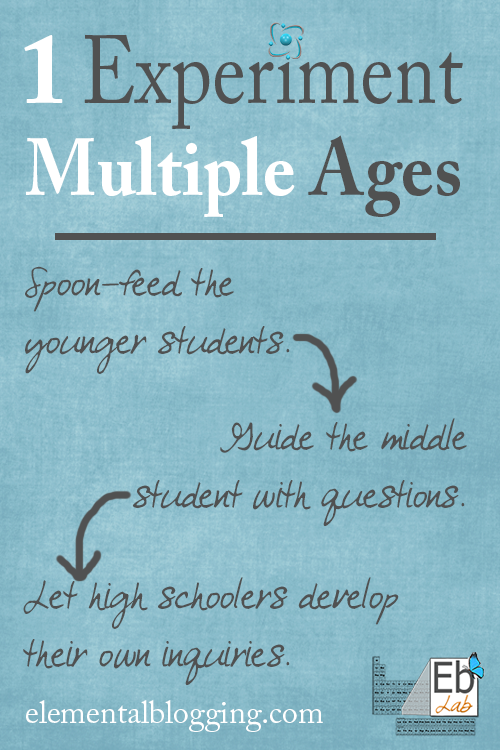 Notice, that you are spoon-feeding the information to the youngest students.
Notice, that you are spoon-feeding the information to the youngest students.
You are leading the middle school students through with questions.
And, you are guiding the high school level students to develop their own inquiries.
3. Expect age-appropriate responses.
Finally, you need to expect each of your students to give age-appropriate responses. In other words, each student should be writing about the experiment in a manner that is applicable to their skill level.
So, the preschooler will be oohing and aahing, which is really all you will expect from him at this age. You could have them share a bit with you about what they learned or what they enjoyed the most, but mainly your goal is to have them take delight in the experience.
The elementary student can write or dictate to you a brief demonstration report. His report will cover a bit about what he has learned, but again your goal is to introduce science in a fun and exciting way. So, don’t worry if their responses aren’t all that scientific.
The middle school student can fill out an experiment sheet that will show his growing intellect. Basically, it will be more detailed and the conclusion will show that he has learned something about the principles at work in the experiment.
The high school student can do a bit more research on the topics before writing a more formal lab report. This report will be much more detailed. It will also display his background knowledge of the subject, relevant calculations, and his insights into the project.
By having the students write about the experiment in a relevant way, you are giving them an opportunity to engage with and learn from the material in an age-appropriate manner.
Final Thoughts
At its core a scientific test in the educational setting, such as a scientific demonstration or experiment, is meant to engage the students with the hands-on reality of science. This is why we are such proponents of using these tools starting in preschool and continuing throughout your students’ academic journey.
However, there is nothing in the rule book that says that you can’t use the same experiment to teach a variety of ages the different concepts found in science. The students should still be reading and writing about science on their level, but it is possible to have only one experiment per week for your entire family.
I trust that in this article I have given you some food for thought as to how you can enjoy science together. If you have any questions about or suggestions on how you have done this with your family, please feel free to leave them in the comments below!

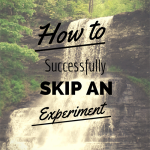
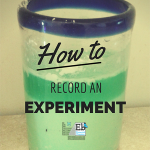
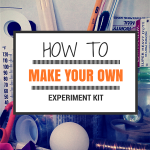





[…] with the materials they need to ignite that spark.” She writes really useful pieces, such as “How to Scale One Experiment for Multiple Ages.” Her blog complements the curriculum that she creates. She is also available as a speaker and to […]